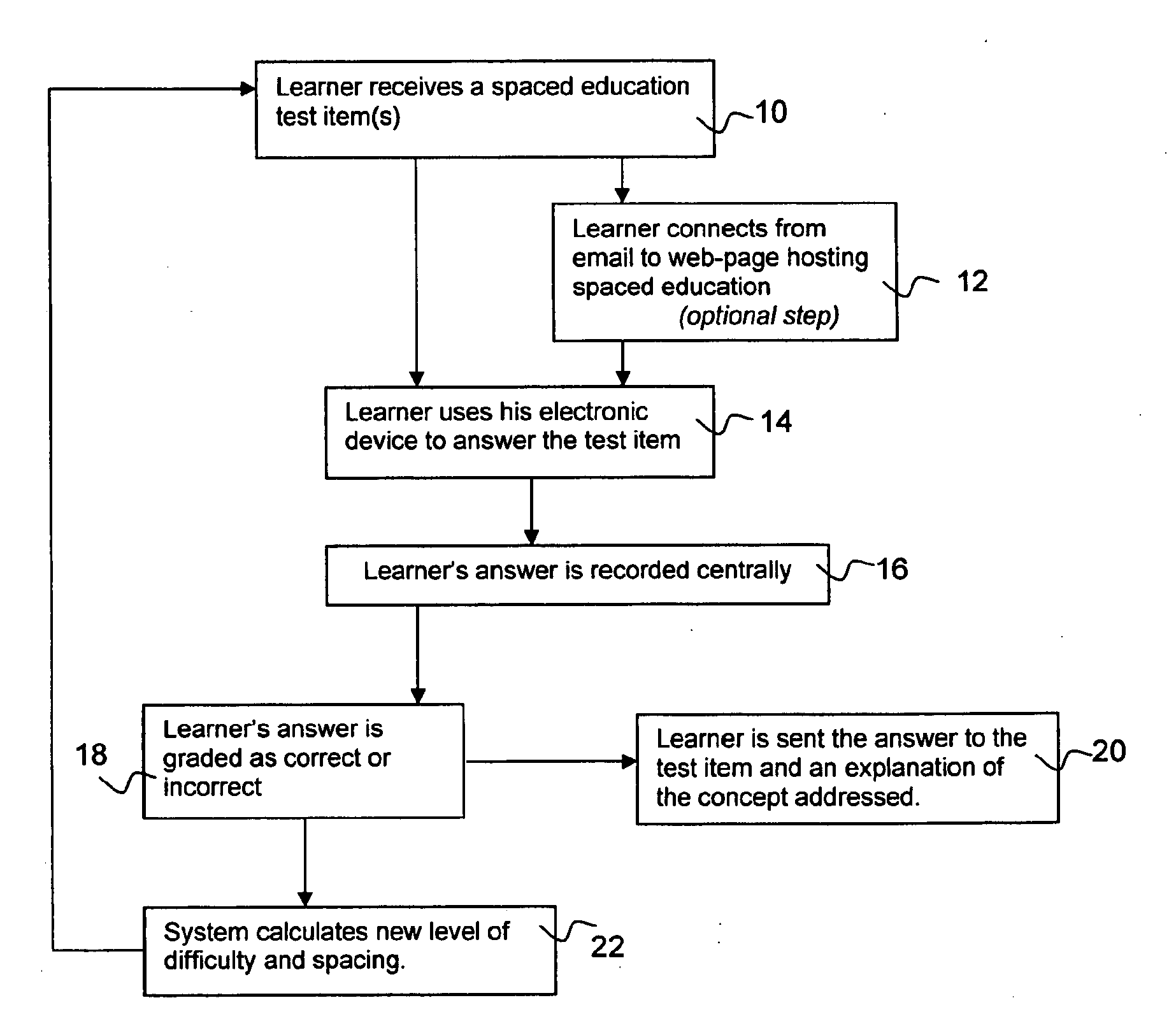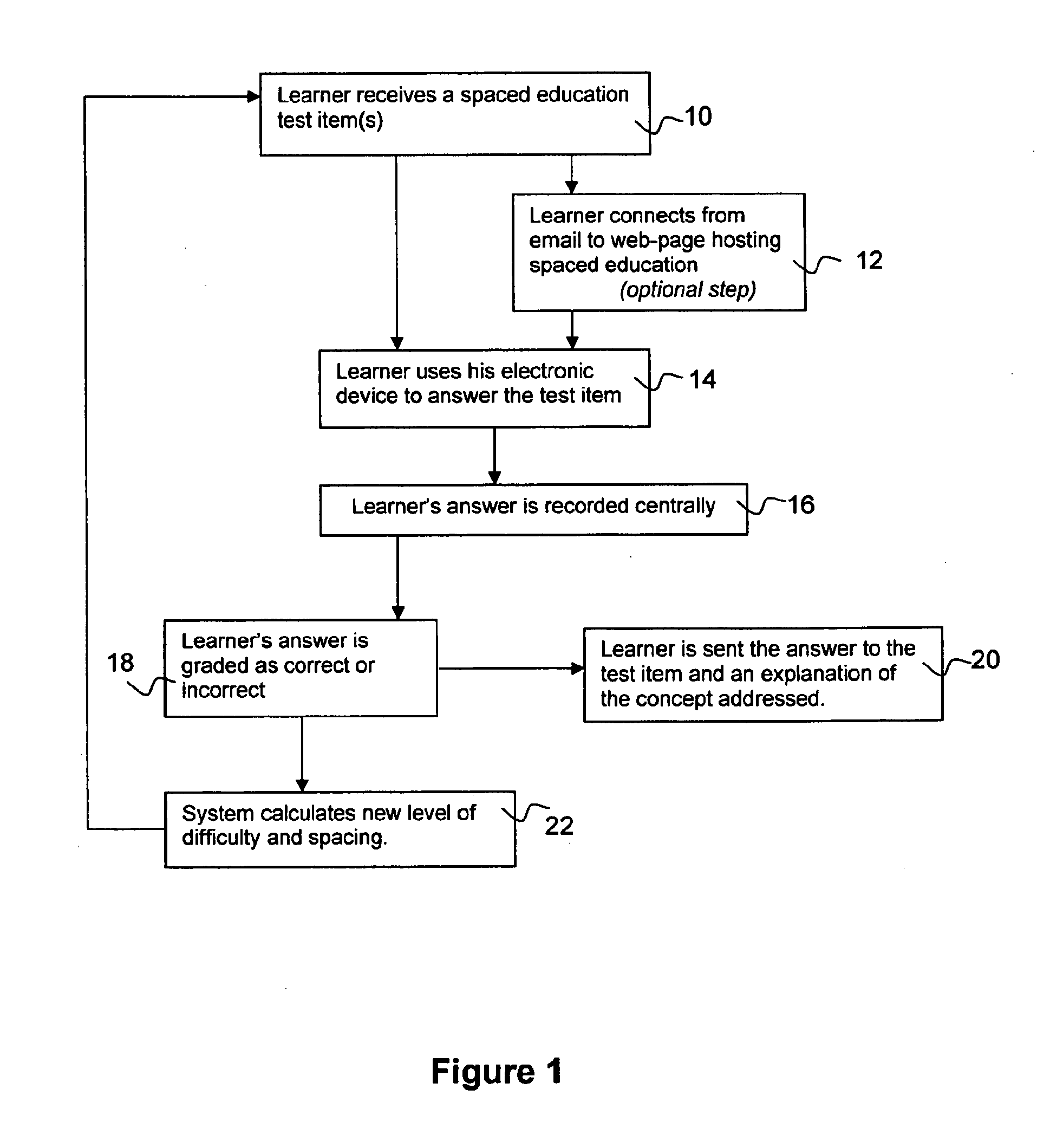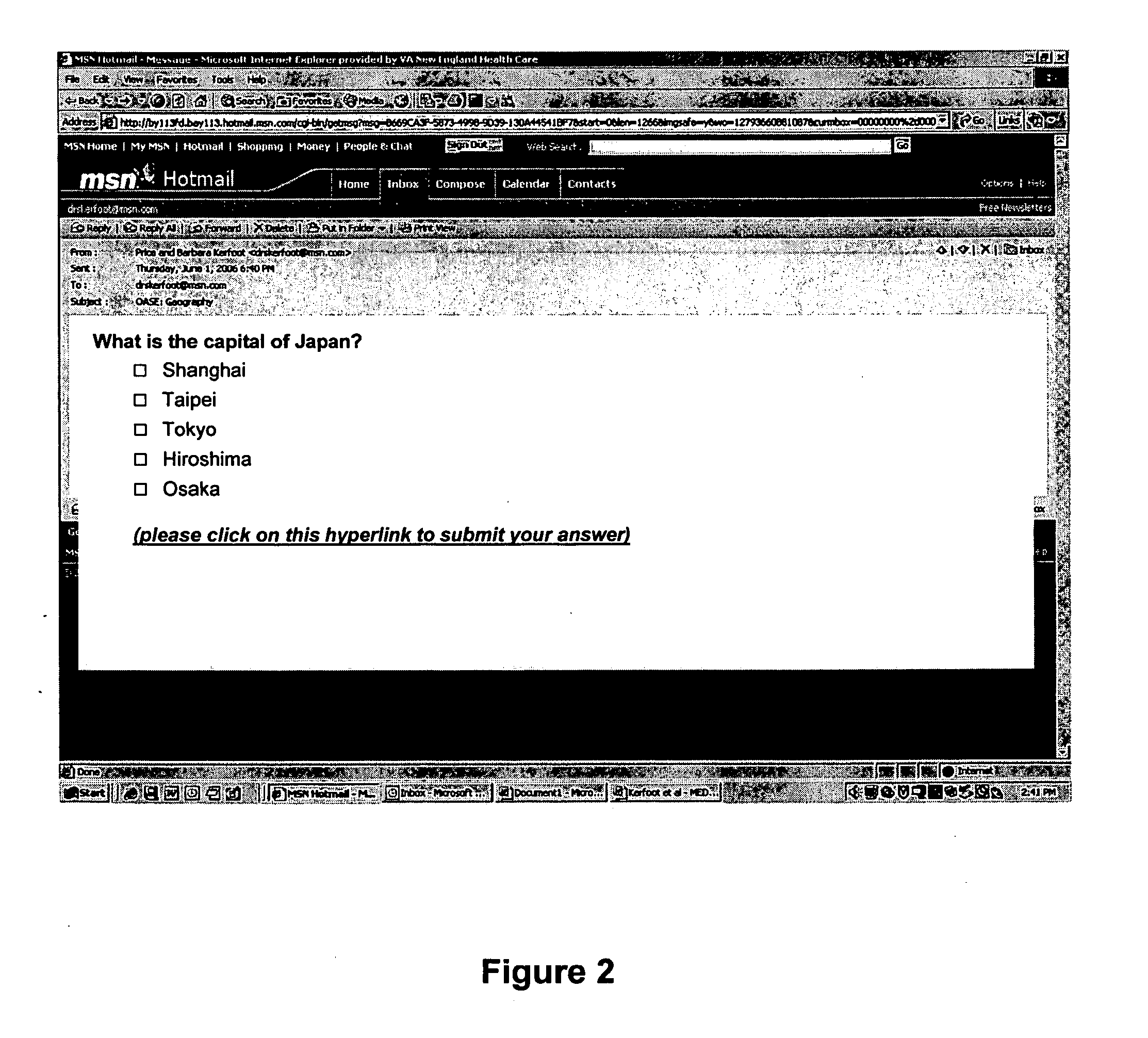Adaptive spaced teaching method and system
a teaching method and space technology, applied in the field of learning methodologies and styles, can solve the problems that medical knowledge learned by trainees is often quickly forgotten, and achieve the effects of improving the learner's ability to learn, recalling, and retaining items, and fostering learning about pertinent concepts
- Summary
- Abstract
- Description
- Claims
- Application Information
AI Technical Summary
Benefits of technology
Problems solved by technology
Method used
Image
Examples
example
Program to Teach the Capitals of the 50 U.S. States
[0087]Test items are constructed in the multiple choice question format, as shown, for example, in FIG. 2.
[0088]The test items are pilot-tested by a sample of learners, which is representative of the larger target population of learners.
[0089]The test items are ranked according to difficulty (most difficult=rank 1; least difficult=rank 50) based on the pilot-test results.
[0090]The learners receive a daily spaced education email containing a test item.
[0091]Each spaced education email contains a test item and a hyperlink to a website where the learner's answer to the test item is submitted.
[0092]As the learners answer the test items, the difficulty of the newly-presented test item material is adapted to match the learner's current knowledge levels (see FIG. 5, for example). Once the current knowledge level (item difficulty level) for each learner is determined, that learner is then presented with new test item material at that diffic...
PUM
 Login to View More
Login to View More Abstract
Description
Claims
Application Information
 Login to View More
Login to View More - R&D
- Intellectual Property
- Life Sciences
- Materials
- Tech Scout
- Unparalleled Data Quality
- Higher Quality Content
- 60% Fewer Hallucinations
Browse by: Latest US Patents, China's latest patents, Technical Efficacy Thesaurus, Application Domain, Technology Topic, Popular Technical Reports.
© 2025 PatSnap. All rights reserved.Legal|Privacy policy|Modern Slavery Act Transparency Statement|Sitemap|About US| Contact US: help@patsnap.com



